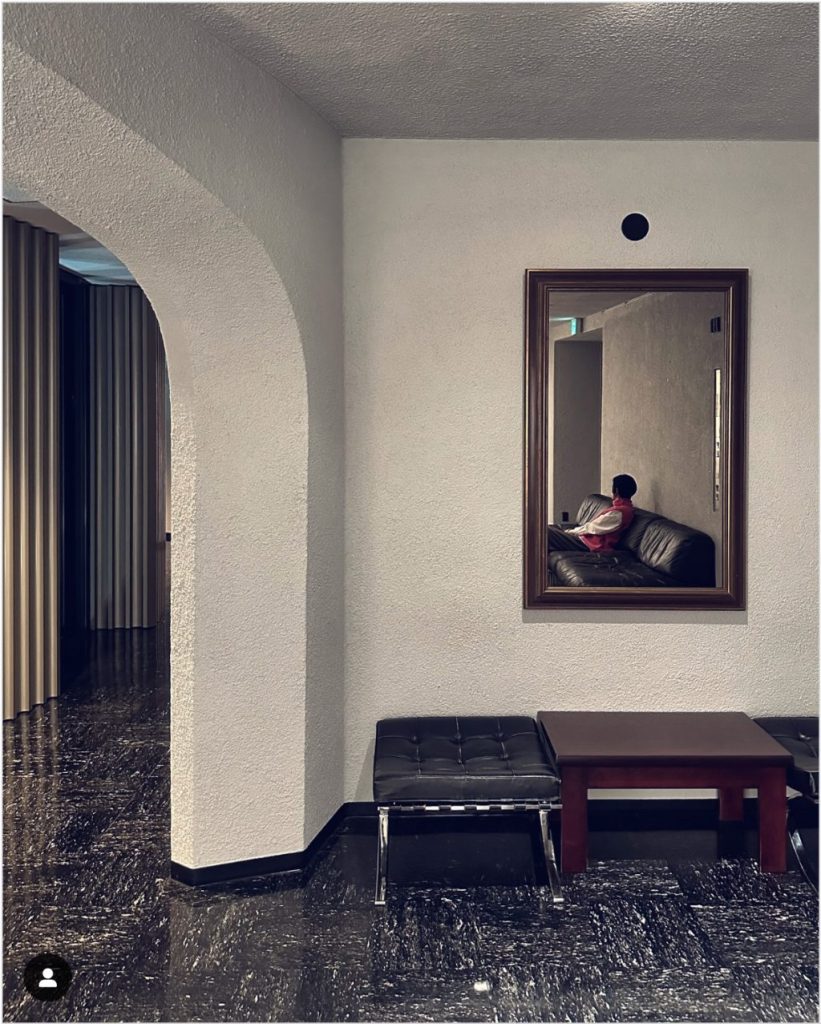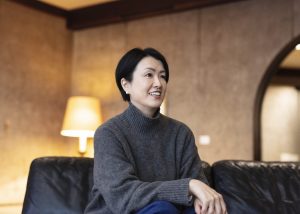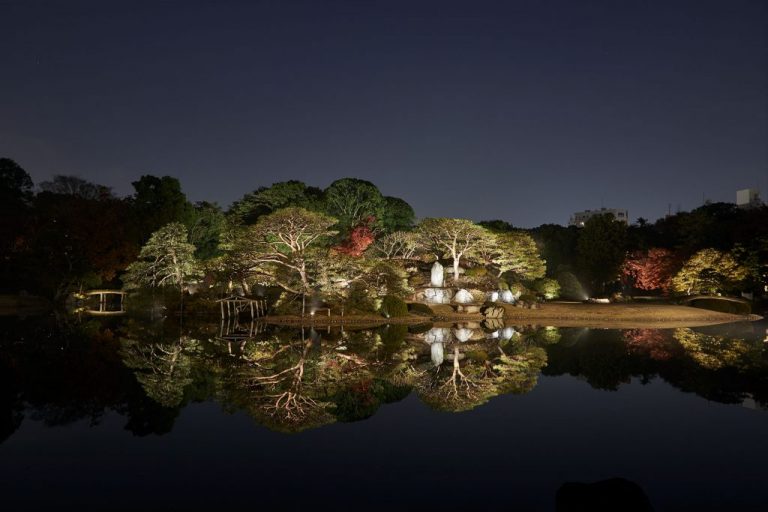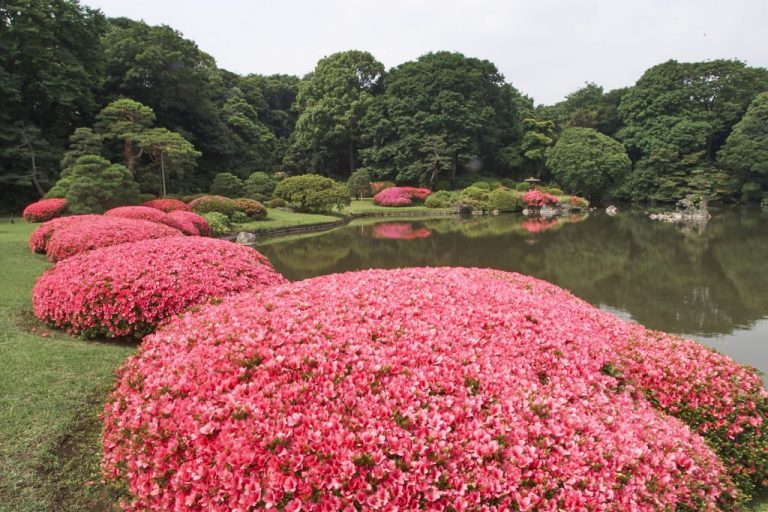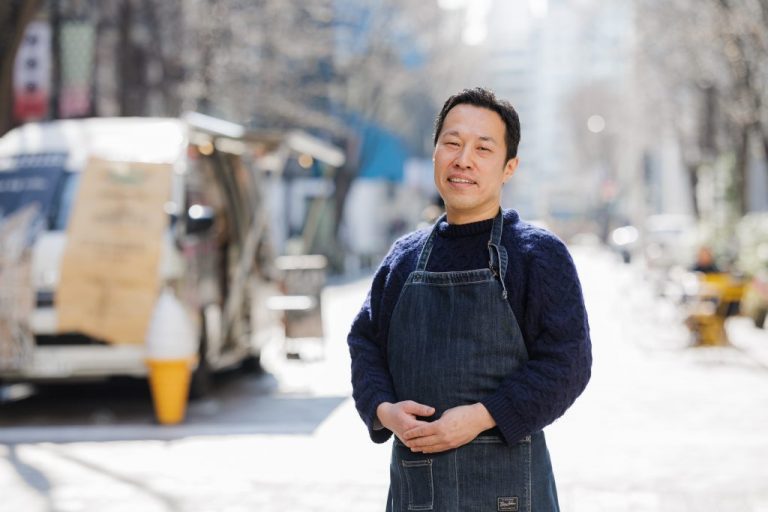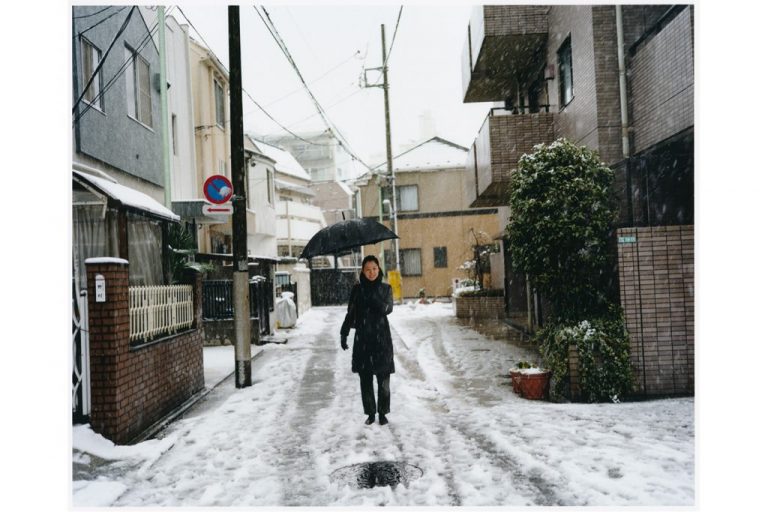The Shoto Museum of Art, opened in 1981, is one of the final works of Seiichi Shirai (1905–1983). It shares many commonalities with the Shizuoka City Serizawa Keisuke Art Museum, another work by Shirai, which opened around the same time. “The Shoto Museum is smaller in scale, but it’s packed with charm,” says Sakata. “Comparing buildings by the same architect allows you to imagine what they thought and how they adapted their designs based on different locations and themes—that’s what makes it so fascinating.”
The interior lighting and signage in the museums were also designed by Shirai.
Instagram “Architecture & Art” : Ayao Sakata’s iPhone Photography Techniques (Part 2)
Discovering Architectural Wonders—Art of Seeing
No.002
In the feature “Discovering Architectural Wonders—Art of Seeing,” we speak with Ayao Sakata, the influencer operating the Instagram and blog titled “Architecture and Art,” about key photography techniques for capturing iconic architecture. In the second part of the series, we visit the Shoto Museum of Art with Sakata. How will she frame the serene spaces designed by architect Seiichi Shirai? She shares her insights alongside her photos as examples.
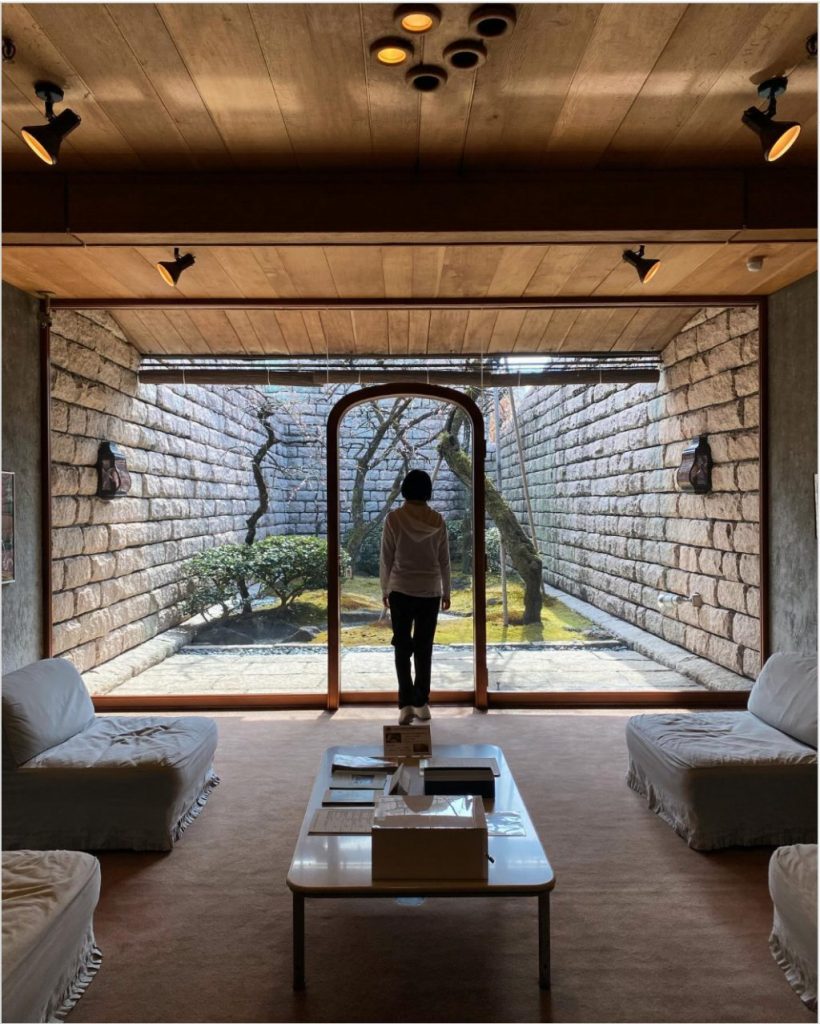
Entrance Adorned with Beautiful Onyx Ceiling
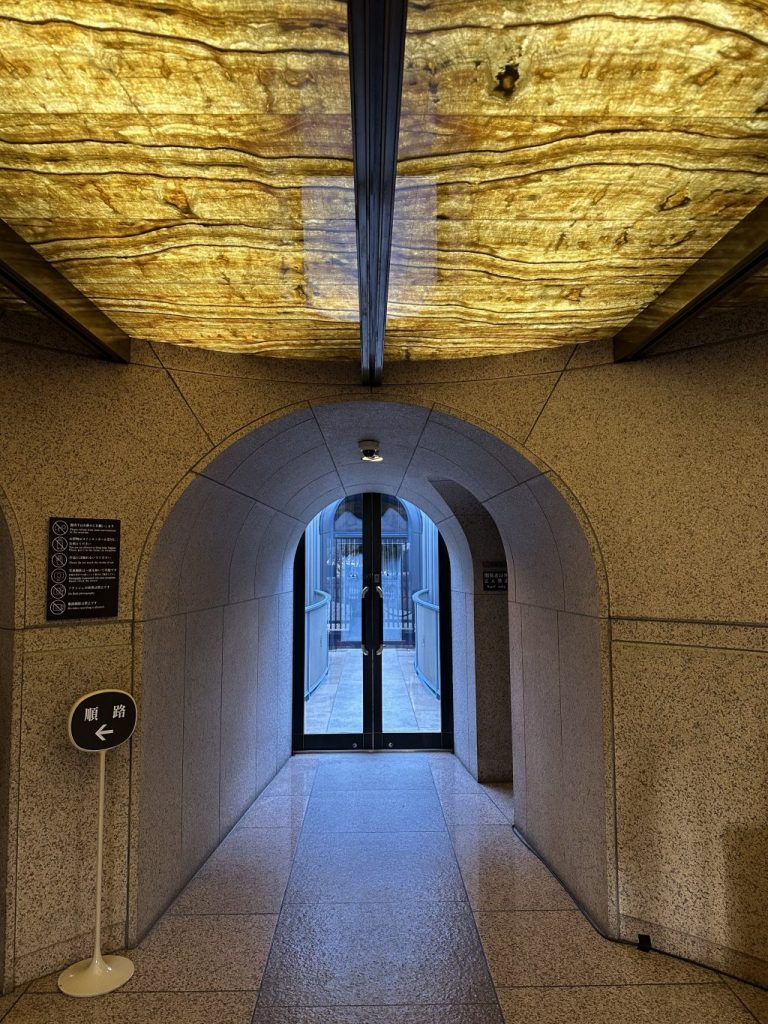
As you step into the first-floor entrance, you notice the ceiling made of natural onyx stone. The feature is also present at the Serizawa Keisuke Art Museum. The two museums share the exterior walls of kounseki (reddish granite) and the de Sede sofas of different colors inside the buildings. Sakata quickly raises her camera. “Including the front arch with the ceiling and shooting from a pulled-back position makes the space appear expansive.”
Atrium with Fountain and Emblem
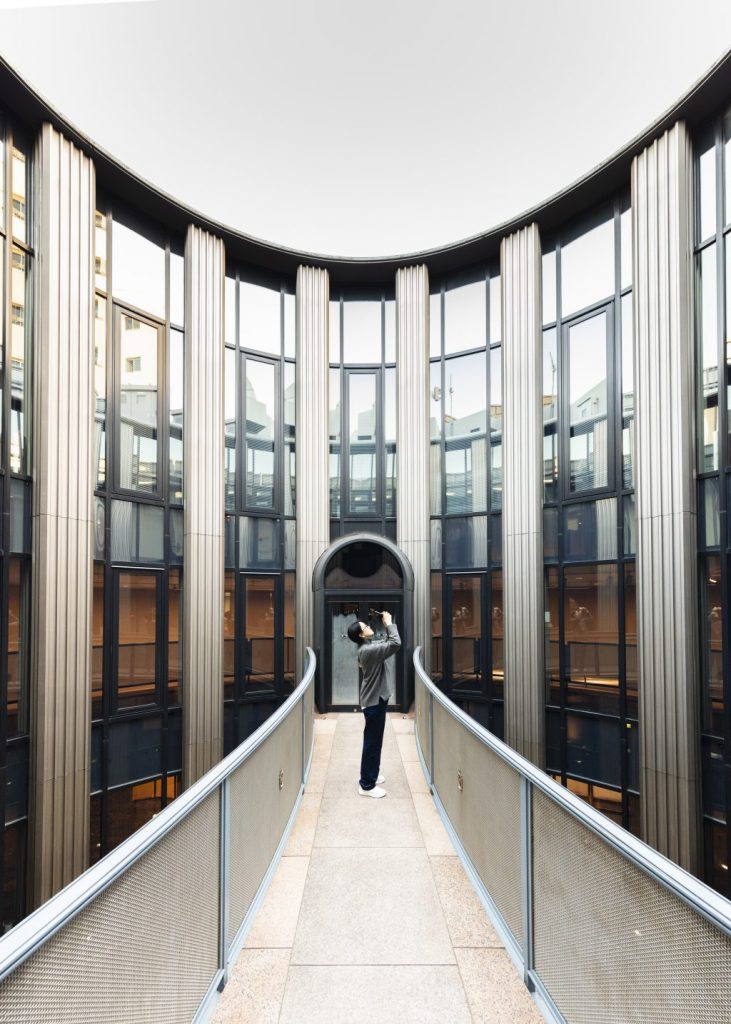
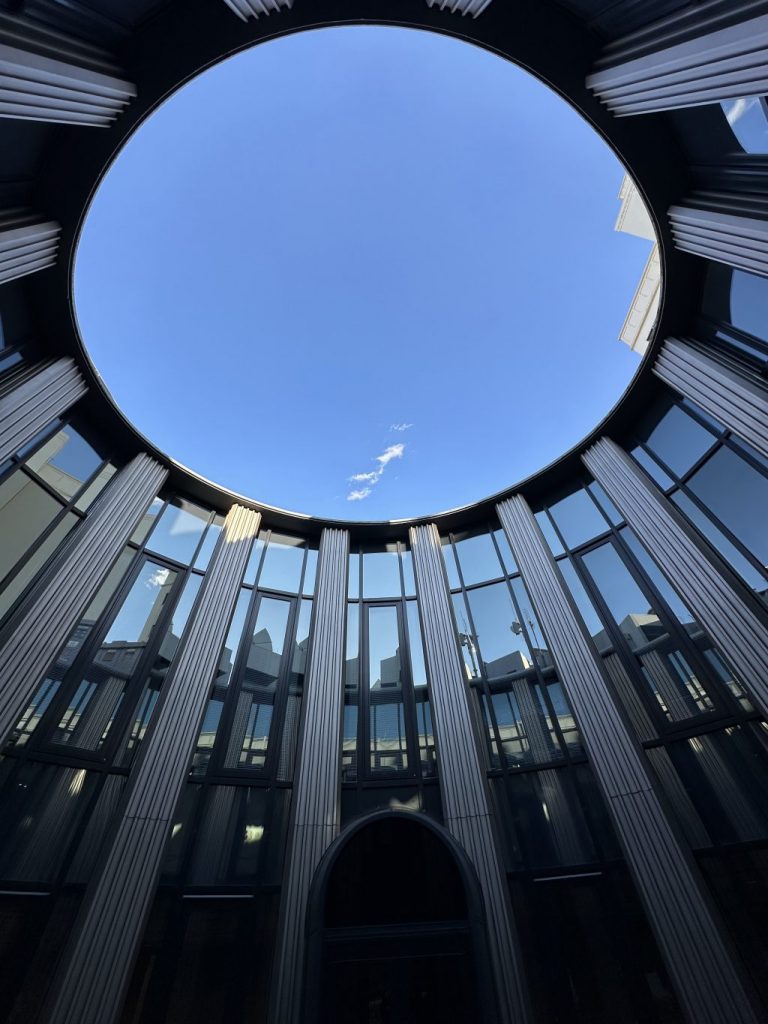
Through the oval atrium, you can catch a glimpse of a neighboring apartment building. This is Chambord Shoto, a work by Von Jour Caux (1934–), often called the “Gaudí of Japan,” from when he was still called himself Toshiro Tanaka. “Some might see it as an obstruction to a clean architectural space, but the truth is, the Shoto Museum of Art was built later. I would like to see it as a timeless collaboration between two great architects.”
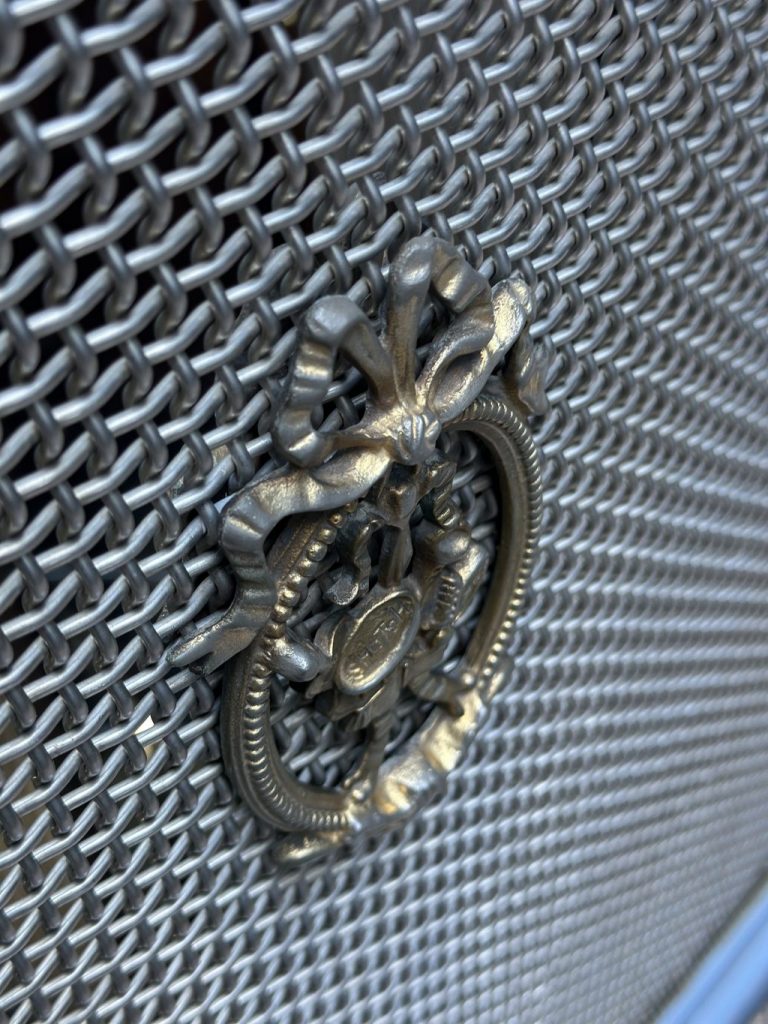
The bridge’s fence is adorned with an emblem, with “SHOTOH” engraved at its center. You can find a similar decoration at the Shinwa Bank (now Juhachi‐Shinwa Bank), but it was not designed by Shirai.
“Kyoto” found at Shoto Museum of Art

Through the circular window in front of the elevator, you can see the garden with maple trees and white gravel. Sakata includes the reflection on the P-tiles (a type of single-layer tile made from plastic resin) in the frame, lowers the camera lens, and shoots from ground level.
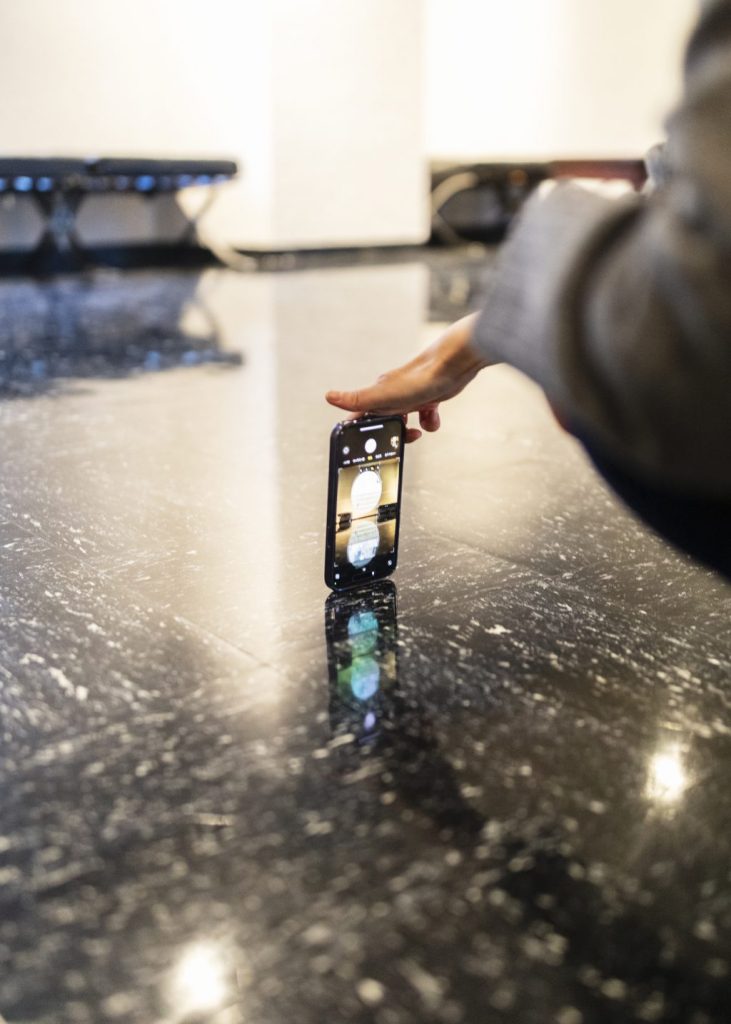
“This technique is effective when shooting reflective surfaces like water. The low positioning of your line of sight creates a mood similar to that found in Yasujirō Ozu’s films.”
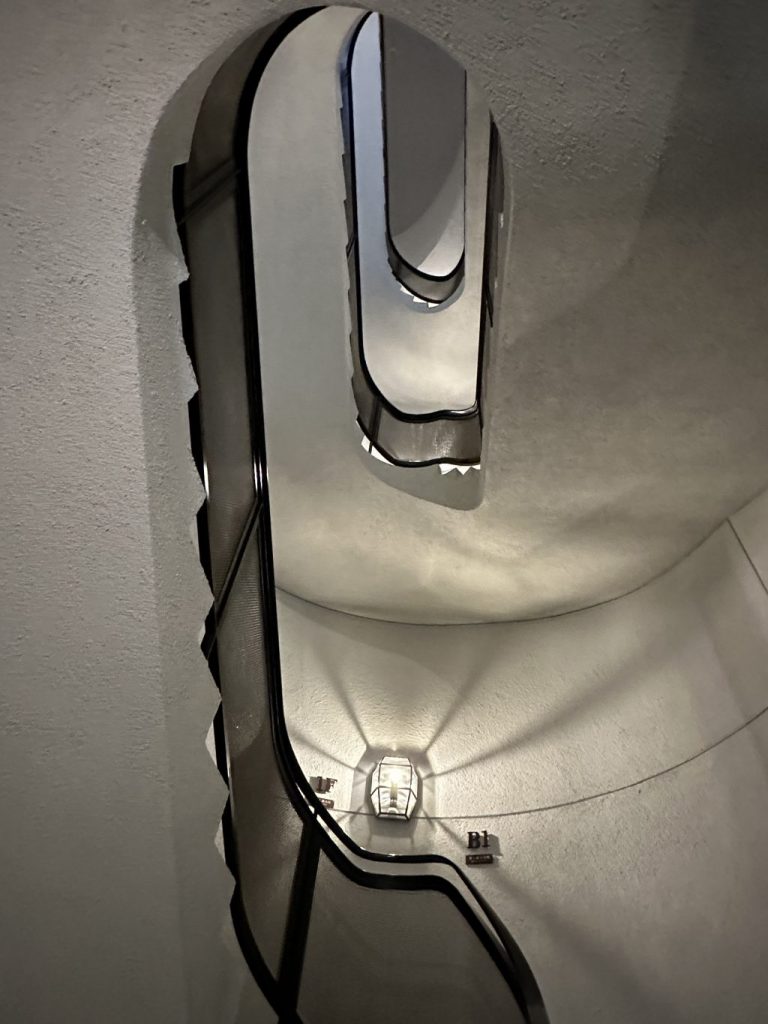
The lighting of the spiral staircase is also striking, but it was set much dimmer when the building was built, creating a cave-like atmosphere.
“I’ve taken photos from an overhead angle every time I come here, so I probably have around 1,000 pictures of it.”
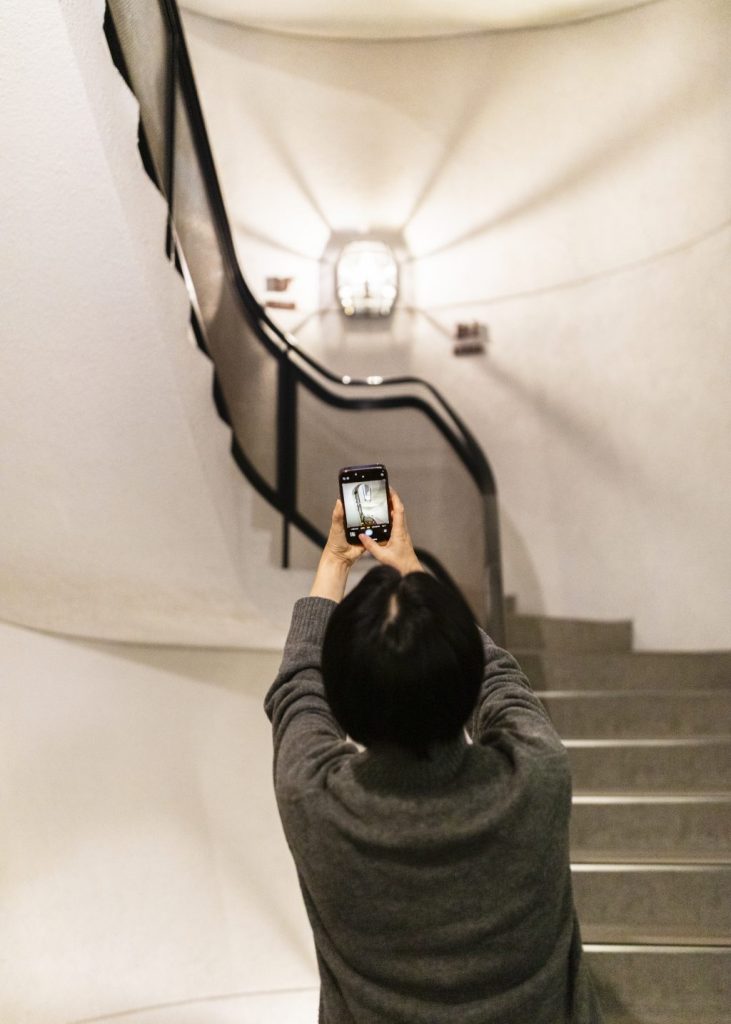
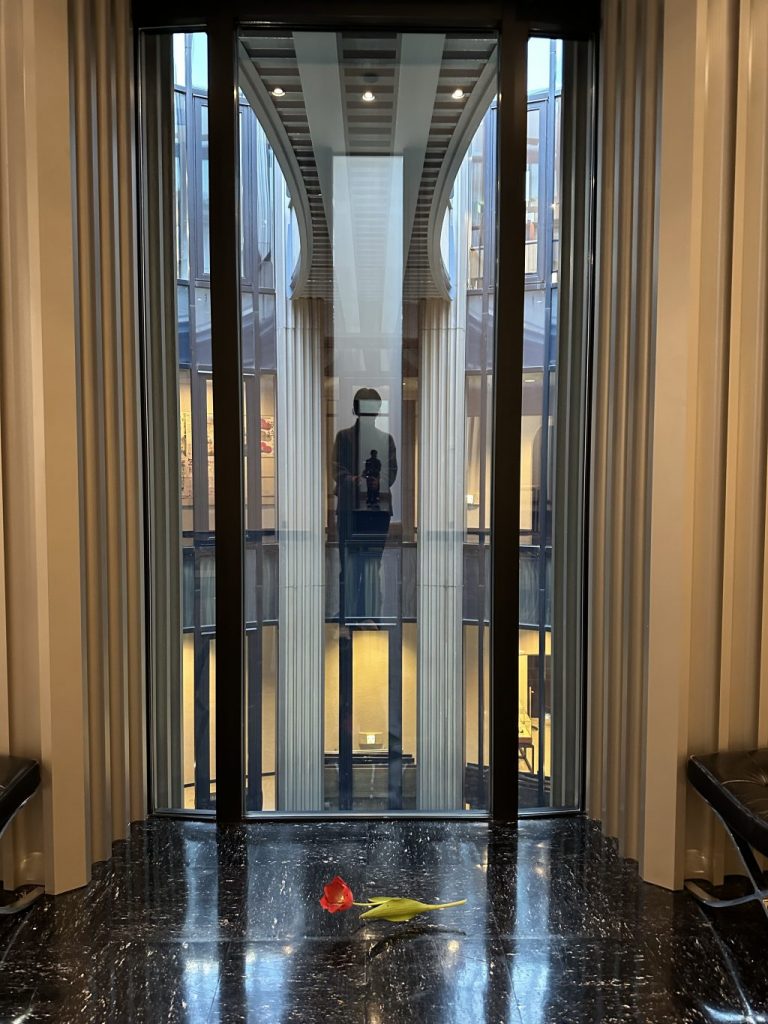
The windows are usually covered with curtains to protect the artworks from sunlight, but they may be opened depending on the exhibition. “Today, we’re lucky,” says Sakata, looking pleased. She turns her camera towards the atrium and captures an interesting image created by reflections from multiple windows.
Hammershøi Point
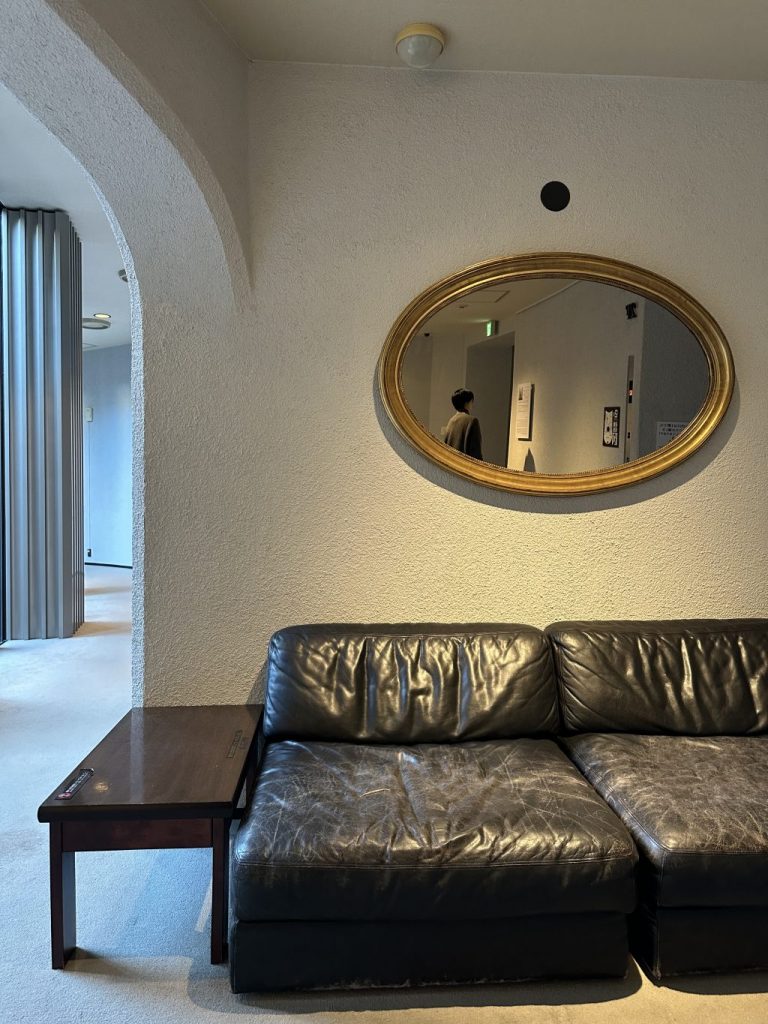
The photo combines soft light and a mirror, creating an atmosphere reminiscent of paintings by Danish painter Vilhelm Hammershøi.
“You never find a mirror in a museum. This demonstrates Shirai’s strong design statement.”
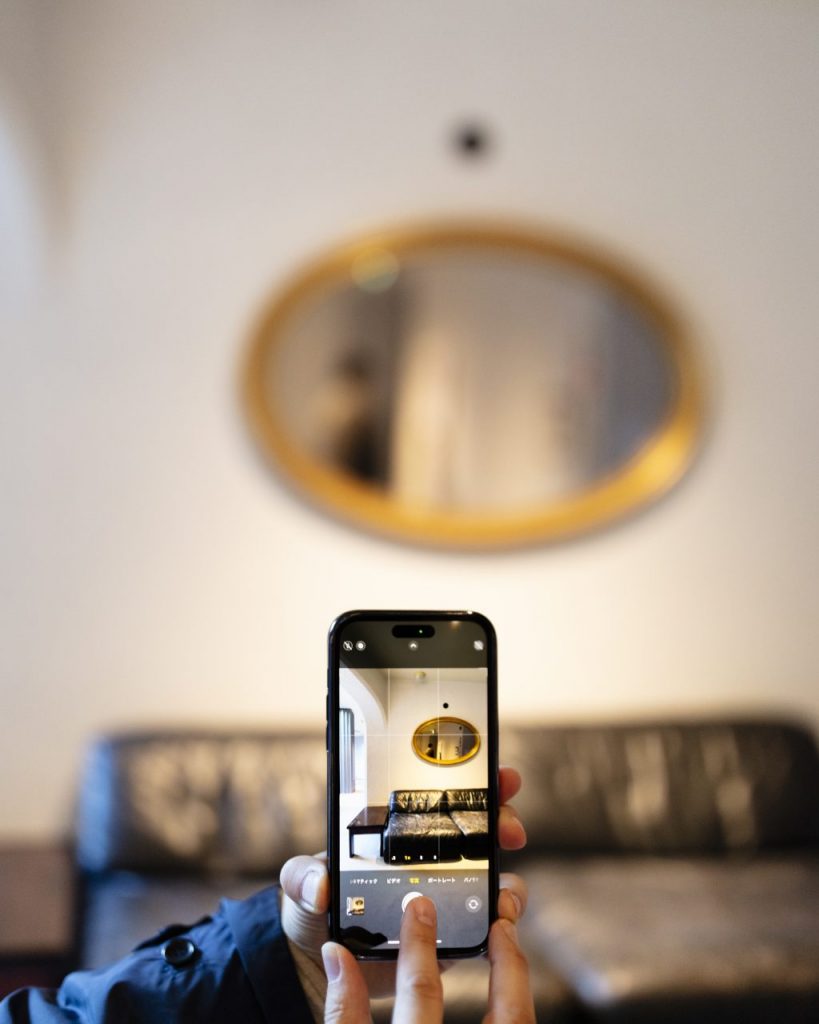
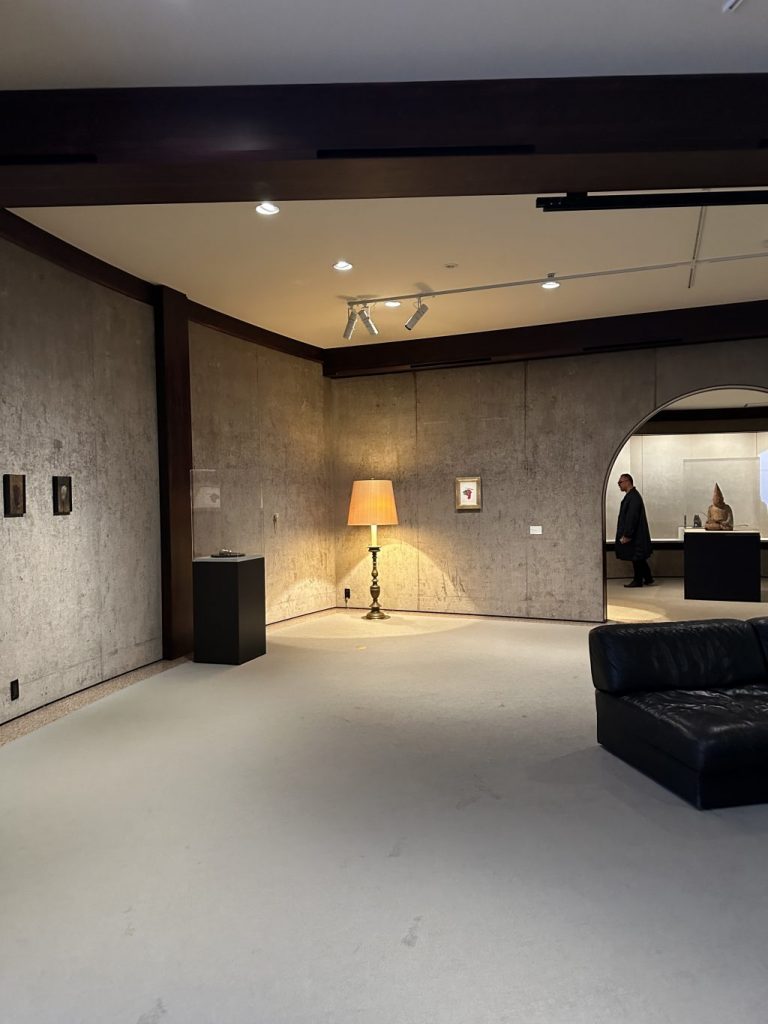
The second floor was used as a café until around 2009 (it is no longer in operation). Sakata has visited it and recalls, “Enjoying cake and tea while looking at artworks was the best experience.” With velvet-covered walls and rosewood beams, this space also carries a strong design statement, unusual for an art museum.
Mystery of Faucet
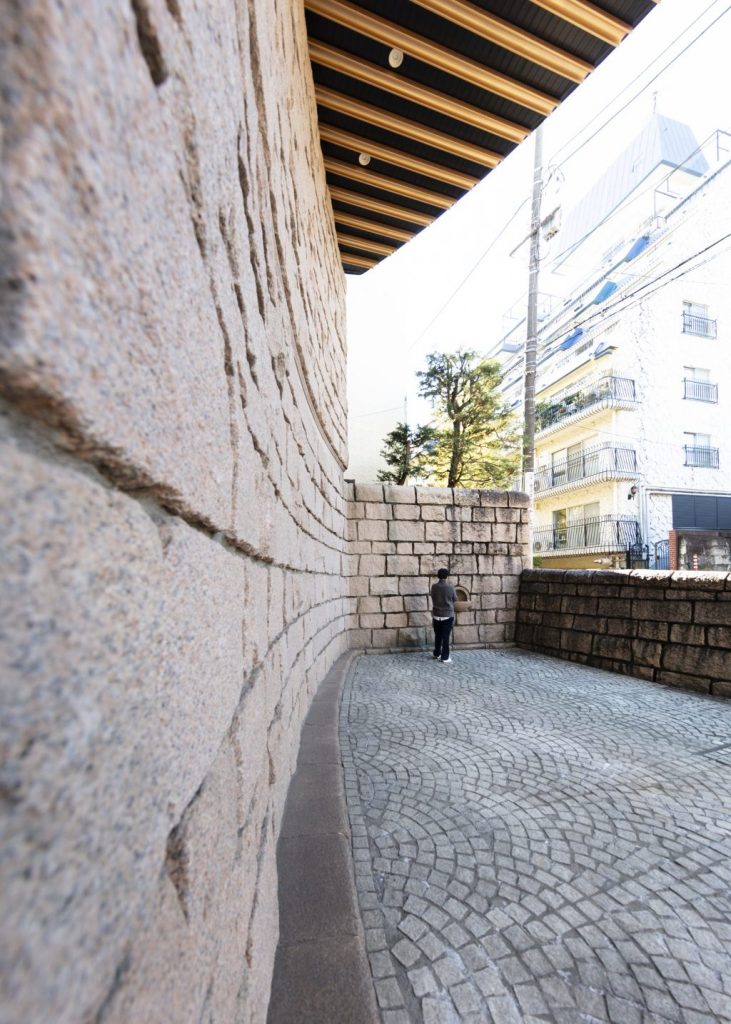
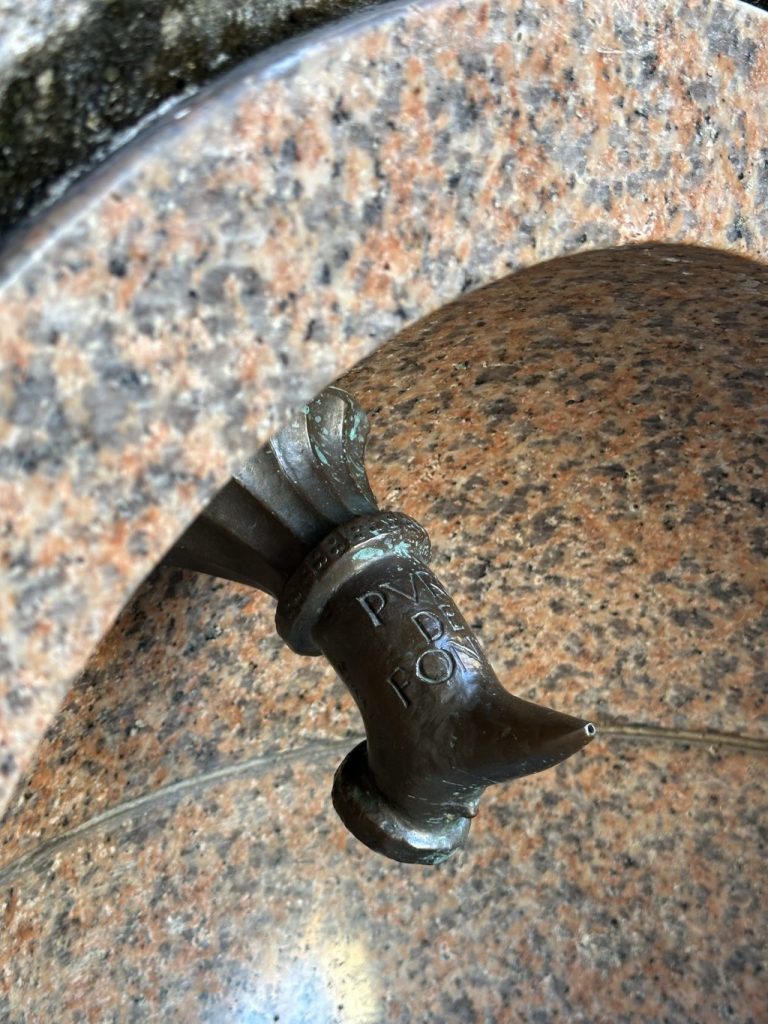
The discreet outdoor faucet is the same as the one that used to be found at the entrance of Kankodo, a bookstore in Maebashi completed in 1954. The front bears the Latin inscription PVRO DE FONTE (pure fountain), and the back is engraved with Shirai’s signature and the bookstore’s completion year.
Having joined several architectural tours of the museum, Sakata recalls being surprised the first time she saw water flowing from it during a tour (*the faucet is not currently functional).
At the end of the interview, we asked Sakata for her recommended architectural spots around the Shoto Museum of Art.
“You can see early works by renowned architects, such as Von Jour Caux’s apartment building and Gallery TOM, designed by Hiroshi Naito, which was established as a gallery where the visually impaired could see works through touch. In Nabeshima Shoto Park, you’ll also find a restroom designed by Kengo Kuma for THE TOKYO TOILET project.”
After enjoying the art at the Shoto Museum, these sites are well worth a visit.
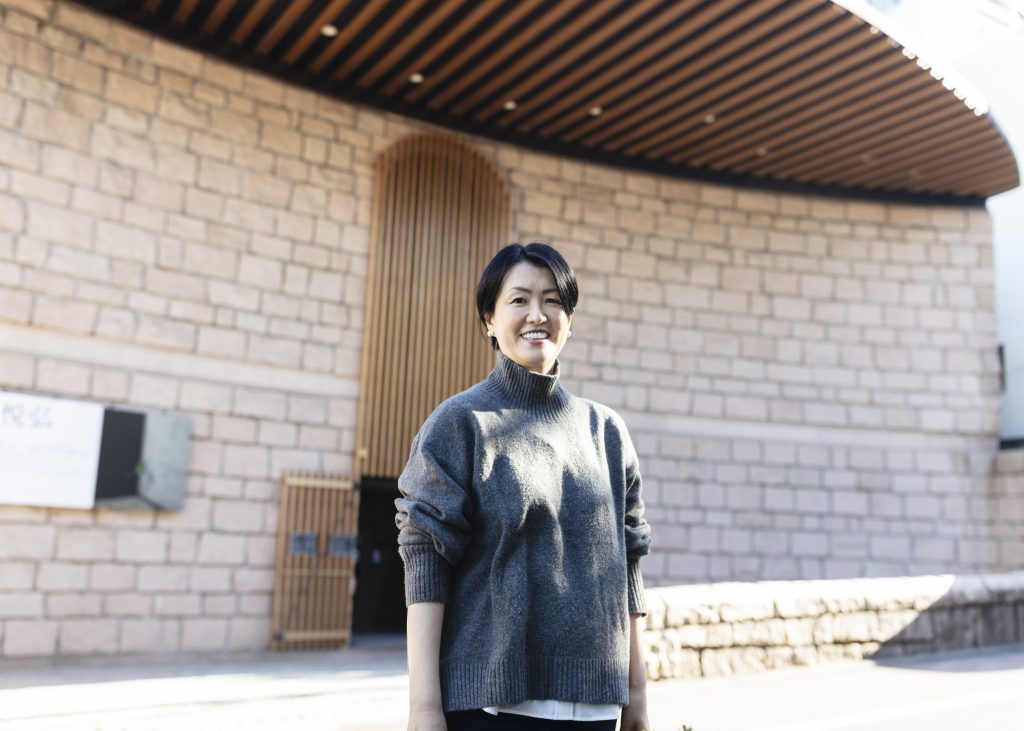
Photo: Shu Nakagawa
Text: Yasuna Asano
Photographed with cooperation of: The Shoto Museum of Art
Translation: Erika Ikeda
The Shoto Museum of Art
Location: 2-14-14 Shoto, Shibuya-ku, Tokyo
Opening hours: 10 a.m. to 6 p.m. (Open until 8 p.m. on Fridays, 9 a.m. to 5 p.m. during public entry and salon exhibitions, admission until 30 minutes before closing time)
Closed: Mondays (when Monday is a national holiday, the museum is open on the day and closed the following business day), during exhibit replacement, year-end and New Year’s holidays, etc.
Admission fees vary according to each exhibition
https://shoto-museum.jp/en/
Ayao Sakata
Born in Tokyo, Sakata graduated from Tama Art University and has worked at a primary gallery for contemporary art, an artist’s private office, and an interior design firm. She has attended nearly 10,000 exhibitions, mainly in Tokyo. She shares architecture and art she explores on her Instagram account and blog, written from a viewer’s perspective. On Threads, she is known as a staircase enthusiast.
https://www.instagram.com/_saaaaaoo_


